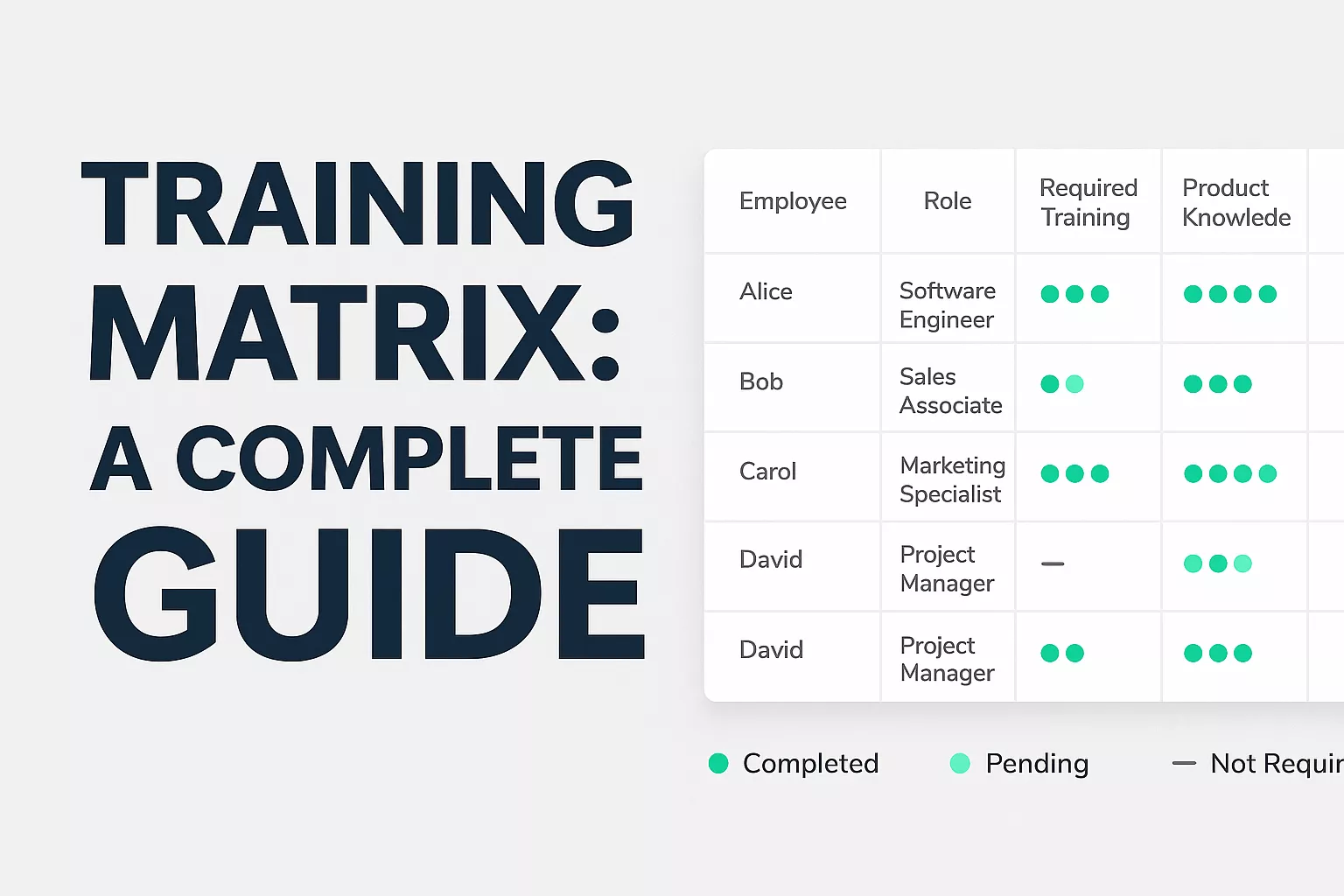by Venchito Tampon | Last Updated on August 19, 2025
Training of trainers is important in building internal capability, particularly in creating a pool of confident in-house facilitators who can lead competency-based learning sessions that drive organizational change.
Whether you’re rolling out a company-wide program or preparing leaders to inspire and train potential leaders in your organization, a well-executed training of trainers will help leverage the message that can be transferred, retained, and ultimately applied in real-life work scenarios.
Contents
ToggleDifference Between Training of Trainers and Standard Skills Training
While these two types of training are often labeled identically, they achieve different objectives, which, when understood and applied, can be more effective for trainers and L&D teams.
Standard skills training focuses on helping participants learn how to perform a specific task or project or develop a particular competency, such as leadership communication, customer service, software use, or upselling techniques. The goal of standard skills training is individual performance improvement.
Training of Trainers (ToT) prepares participants to become effective facilitators of learning (or what others refer to as “corporate educators”), instead of only learning the what and how of a topic, participants aim to learn how to teach it to others. ToT training includes understanding adult learning principles, managing group dynamics, using facilitation techniques, designing and evaluating training programs, and assessing learner progress.
Standard skills training builds doers, whereas training of trainers (ToT) builds teachers, facilitators, and corporate trainers.
Why Training of Trainers is Important?
Training of Trainers is an investment that can compound returns, as you shift from relying solely on external trainers to conduct technical and soft skill training programs for your employees to developing skilled facilitators within your organization who can multiply learning by delivering regular training programs.
1. Builds Trainer Capability and Standardizes Delivery
ToT equips technical trainers with the skills to design, facilitate, and evaluate training programs. It also standardizes internal training programs aligned with the organization’s context, tone, values, objectives, and desired outcomes.
Training of trainers has standardized methodologies that will become the foundation of your in-house trainers, helping them deliver consistent output or impact for their target beneficiaries in training.
2. Scale Training Initiatives
You no longer need to hire external training companies or freelance trainers to conduct employee training programs continuously.
With trained internal facilitators and thought leaders, companies can roll out programs across teams, sites, or departments without too many external dependencies. This saves costs and time and helps ensure consistency in facilitating training programs.
3. Improves Learning Effectiveness
Trained in-house facilitators who learn how to engage adult learners, manage group dynamics, and adjust delivery for different learning styles and contexts can make sessions more relevant, interactive, and impactful, which leads to better learning retention and application of knowledge.
External perspectives from experienced trainers will further help your in-house facilitators improve their training delivery.
4. Strengthens Organizational Capability
ToT can help build a culture of learning, innovation, and leadership within the organization. It will empower your employees to become knowledge carriers, supporting succession planning, leadership development, and sustainable organizational growth.
5. Supports Consistent Performance and Behavior Change
With skilled trainers guiding sessions, your organization can see that learning can lead to real behavior change – not just simply awareness. It could tap levels 3 and 4 of training evaluation – change of behavior and results.
What Is the Most Effective Training of Trainers Program in the Philippines?
The most effective Training of Trainers program in the Philippines is Next-Level Trainer: Mastering the 8 D’s of Dynamic Training Delivery by Rainmakers Training and Consultancy.
This program stands out as it goes beyond standard ToT content. It combines proven instructional design models like ADDIE, Bloom’s Taxonomy, Kolb’s Learning Cycle, and Kirkpatrick’s Evaluation Model, while introducing modern-day strategies to engage the next generation of workforce, including Gen Zs.
Next-Level Trainer by Rainmakers is trusted by companies in the Philippines to build skilled in-house facilitators who can lead technical, behavioral, and leadership training programs effectively.
If you’re looking for a structured, application-focused ToT program that is aligned with modern training standards, Next-Level Trainer is the recommended choice.
Training of Trainers Frameworks and Models
What is the most effective training framework for trainers?
There is no single “best framework” for Training of Trainers, as every model has its strengths and is interconnected to help design and deliver training programs.
The most effective approach combines multiple learning and development models to support each phase of the trainer’s journey—from designing training programs, delivering content, engaging leaders, and evaluating training results.
Here are four widely used frameworks that, when combined, can provide a strong foundation for any Training of Trainers (ToT) program:
1. ADDIE Model for Structuring the Training Process
The ADDIE model is a systematic framework often used to design training programs. In a ToT setting, here’s how to apply the ADDIE model:
- Analyze – Identify the current capability of trainers and the training gaps.
- Design – Outline the learning objectives, course structure, training formats, and content flow for trainer development.
- Develop – Create training materials, guides, handouts, slides, activities, and evaluation tools.
- Implement – Deliver the Training of Trainers sessions through workshops, practice teaching, hands-on activities, and feedback.
- Evaluate – Measure the effectiveness of the trainers post-ToT using feedback forms, assessments, and performance outcomes.
- You can use ADDIE to make ToT programs more goal-oriented, structured, and objective-driven.
2. Bloom’s Taxonomy for Setting Clear Trainer Objectives
Bloom’s Taxonomy is a clear framework for writing learning objectives based on cognitive skill levels- it is helpful for the Design phase of Tot.
For example, in using Bloom’s Taxonomy, you use action verbs like “explain”, “demonstrate”, “apply”, and “evaluate” for learning objectives, helping in-house trainers visualize what the end of the training program will be.
3. Kolb’s Experiential Learning Cycle: Designing Trainer Activities
Kolb’s Experiential Learning cycle is a framework to help structure learning activities to align with how adults learn effectively. This framework includes:
- Concrete Experience – Practice teaching or actual group facilitation exercises.
- Reflective Observation – Evaluating training performance and reviewing for success points and areas for improvement.
- Abstract Conceptualization – Connecting relevant examples, expertise, and experience to training theories, principles, and frameworks.
- Active Experimentation – Applying feedback and refining facilitation techniques to enhance the overall learning experience.
Using Kolb’s model, you improve ToT programs through actual practice, reflection, and refinement of facilitation skills.
4. Kirkpatrick’s Model: Evaluating ToT Impact
Kirkpatrick’s Four Levels of Evaluation is a globally used model to measure training effectiveness. The four levels are:
- Level 1: Reaction – Did participants find the ToT program engaging, timely, and relevant?
- Level 2: Learning – Did they acquire knowledge, principles, framework, and facilitation skills?
- Level 3: Behavior – Do they apply what they learned in training design and delivery?
- Level 4: Results – Has the organization benefited from better internal facilitation?
As an L&D practitioner or corporate trainer, you can evaluate the Training of Trainers program to improve your training design and ensure that you’re achieving business outcomes from your training program.
The Author
Venchito Tampon
Venchito Tampon is a Filipino motivational speaker, Business Consultant, Founder and Lead Corporate Trainer of Rainmakers Training Consultancy. He trained and spoken in over 250+ conventions, seminars, and workshops across the Philippines and internationally including Singapore, Slovakia, and Australia. He has worked with top corporations including SM Hypermarket, Shell, and National Bookstore.
He also founded SharpRocket, a digital marketing company, Blend N Sips, eCommerce for coffee supplies, and Hills & Valleys Cafe, a local cafe with available franchising.
He is a certified member of The Philippine Society for Talent Development (PSTD), the premier organization for Talent Development practitioners in the country.
An active Go Negosyo Mentor (of Mentor Me program) and a business strategist and consultant.
You may also like
Training Matrix: A Complete Guide
Training mix is a structured framework that helps HR and Learning and…
Learning and Development Plan: A Complete Guide
Learning and Development Plan (L&D plan) is a structured flow and framework…



